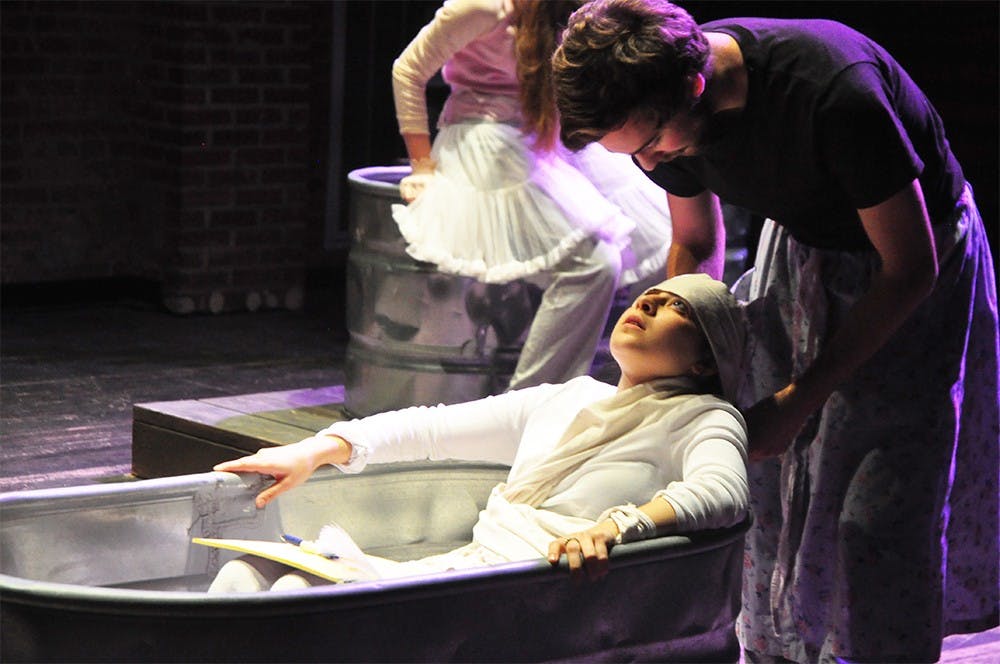The Marquis de Sade, born in 1740, was incarcerated in various prisons and in an insane asylum for 32 years of his life.
During this time, he still wrote the novels, short stories and plays for which he became known.
University Players’ production of “Marat/Sade” includes the Marquis as a character who writes a play for asylum patients to perform while he is also institutionalized.
The play the Marquis writes is about Charlotte Corday’s plot to murder Jean-Paul Marat during the French Revolution.
The actors portray mental patients who portray characters in the play about the Revolution. The play is multi-leveled and meta-theatrical, codirector and senior Alex Goodman said.
“We travel through Charlotte Corday coming to Paris and deciding that she’s going to kill Marat, but at the same time we get these great arguments about philosophy, life and death, the nature of prisons and revolutions and what is freedom and what is individuality,” Goodman said.
These arguments occur against a backdrop of murder that actually happened, she said.
One effect of the play within a play is the audience is only distanced from one of the plot lines, Goodman said.
The audience knows the Revolution play is only a play and no one is actually getting murdered onstage, but they aren’t so distanced from the mental patients who are putting on the play.
“It’s safe, but it’s completely not at the same time,” Goodman said. “It’s this wonderful blend of theatrical ideals and theories, and we love it.”
Co-director and senior Lauren Sagendorph said the double plot line is not the only theater convention they are breaking with this performance.
There will be a character in the audience who interacts with them, there will be no director’s speech to start the play and the house lights will be on during one of the plot lines.
“We get the audience asking questions,” Sagendorph said. “They don’t just sit back passively, they’re active and they have to be focused.”
One of the questions Sagendorph wants them to ask is what defines mental illness and normalcy, she said.
The patients portrayed in the play are not in straitjackets foaming at the mouth, but rather individuals with heartbreaking stories of neglect.
“My favorite part is seeing that these people who were locked up in history and reprimanded for having a social oddity actually are very normal and very beautiful, intelligent humans,” Sagendorph said. “They were just put away because someone decided they were quirky or odd.”
Caroline Lee, stage manager and freshman, said there is no real fourth wall in the show.
The characters seem to be interacting directly with the audience.
The social commentary along with the real historical events and the closeness of the story creates a lot for the audience to think on, Goodman said.
“It’s wild, it’s fun, it’s brutal, it’s poetic, it’s a million different layers,” Goodman said. “Any audience member who comes will have a lot to go home with afterward because it’s so huge.”






